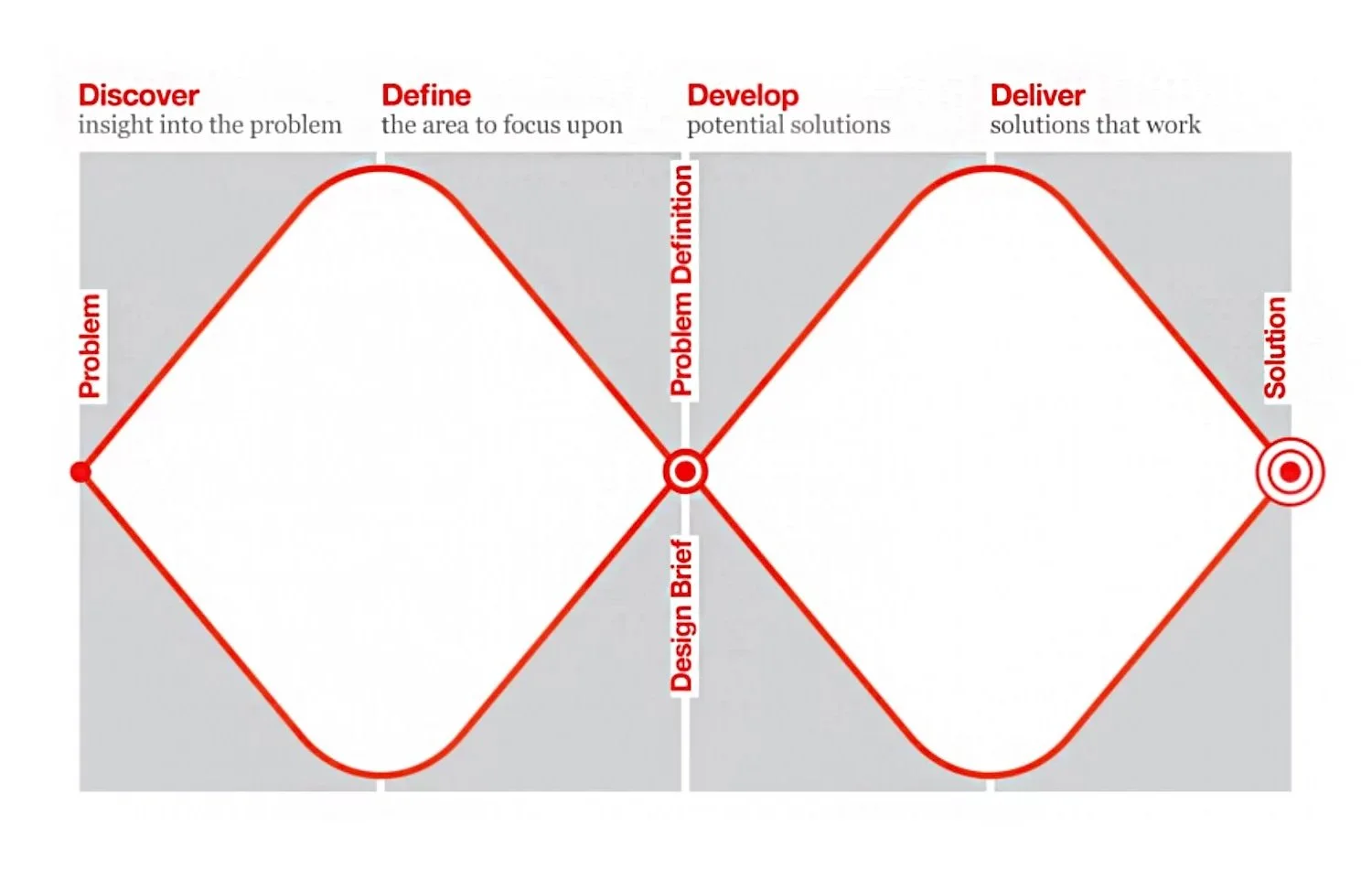Digital Equity and the Double Diamond
By Maya Totonchi
Digital Equity organizations in Washington State all share a common goal in promoting digital inclusion for residents and helping them get access to the internet and the technology they need to be part of our modern society. While each organization is different in its own way, they have undoubtedly followed a similar strategy of analyzing the problem, determining what to focus on, designing programs, and officially forming a legally recognized organization. For example, I had the opportunity of watching a DELN zoom meeting hosted by the Literacy Source and learned about the programs they offer to help students get access to digital education during the pandemic. The Literacy Source recognized the problem of students being unable to participate in online learning due to COVID and focused on what kind of strategies they could come up with to help them receive the education they need. They created programs that offer digital skills training, remote tutoring, and many more opportunities that people can take advantage of. In doing so, Literacy Source succeeded in serving 615 students in the past year, making sure every single one had access to a Chromebook. The steps they took in finding a solution to a problem and solidifying a solution seemed very similar to processes used in design.
Researching Digital Equity and learning about many of the organizations in Washington State reminded me of the Double Diamond model. The Double Diamond design model has been around since 2005 and has been recognized as an effective process for designers to follow when designing. The diamond can be split into four sections: “discover,” “define,” “develop,” and “deliver.” Step one, “discover”, is the data gathering stage where the designer identifies the problem and takes time to learn more about it. The second step, “define,” involves focusing on the important information collected in the first step and discarding irrelevant parts so that the designer can clearly understand the core components of the problem. The designer will then move onto the “development” stage where they officially begin designing the product after ideating solutions and solidifying it through wireframing and prototyping. The fourth step, “discover,” is where designers will test their prototype to make sure that there are no issues with the design before officially launching it. The completion of each step is crucial for making a good design that will satisfy the needs of its users.
Double Diamond design model by Justinmind
Just as designers follow the model for design projects, organizations also practice similar methods for their programs. Digital Equity advocates and designers both share a common goal which is to serve their user’s needs by creating a “good” design. Information gathering is usually the first step to solving any problem. Creating a design that will act as a solution to the problem is the ultimate goal, and it is expected that this design will be ethical, sustainable, and effective. Every Digital Equity organization has done this, and by doing so, has made a significant impact in helping with digital inclusion in Washington State.

